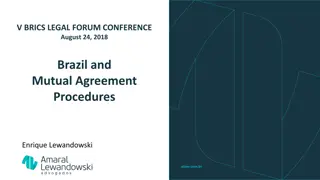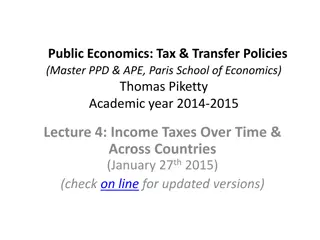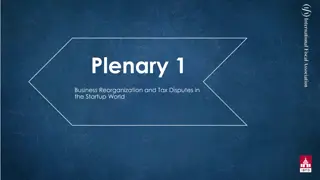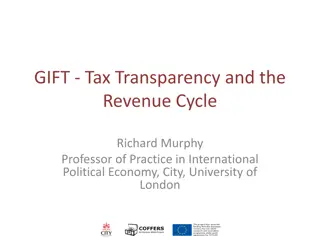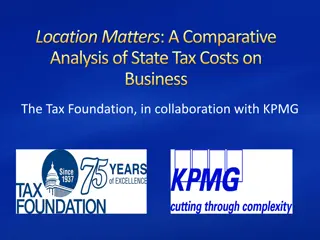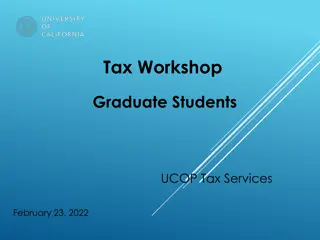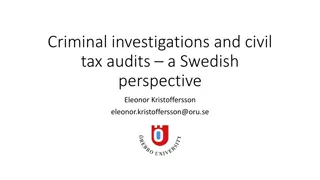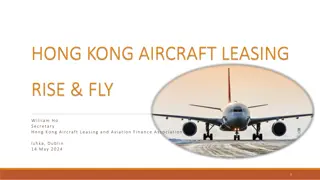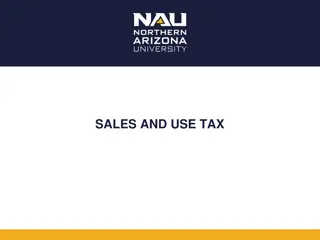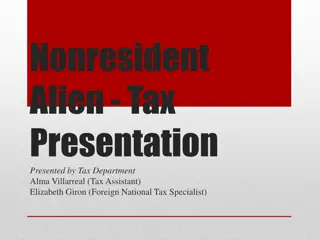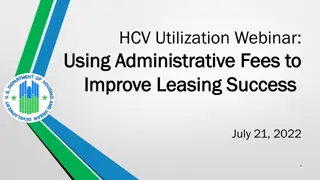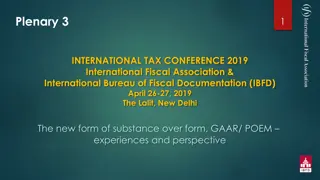Global Tax Changes and the Impact of BEPS 2.0 on Leasing
Comprehensive overview of the BEPS framework, including background information, Pillar 2 implications, and details on the implementation of global minimum tax rules. Explore the significance of BEPS for multinational enterprises and the tax landscape.
Download Presentation

Please find below an Image/Link to download the presentation.
The content on the website is provided AS IS for your information and personal use only. It may not be sold, licensed, or shared on other websites without obtaining consent from the author.If you encounter any issues during the download, it is possible that the publisher has removed the file from their server.
You are allowed to download the files provided on this website for personal or commercial use, subject to the condition that they are used lawfully. All files are the property of their respective owners.
The content on the website is provided AS IS for your information and personal use only. It may not be sold, licensed, or shared on other websites without obtaining consent from the author.
E N D
Presentation Transcript
CONFIDENTIAL CONFIDENTIAL Global Tax Changes and What They Mean for Leasing Background BEPS 2.0 Pillar 2 Impact of BEPS/BEPS 2.0 on Leasing Impact of BEPS/BEPS 2.0 on Leasing in Ireland 1
CONFIDENTIAL CONFIDENTIAL Background 2013 G20 endorsed the OECD Action plan to address tax avoidance by multinational enterprises 2015 Final package of measures under the Base Erosion and Profit Shifting (BEPS) project released Comprehensive framework of international standards and recommendations to help address the BEPS concerns 2016 onwards Implementation of actions 2-15 Significant changes to tax law following the BEPS Action Plan and (ATAD) Action 1 of BEPS, which considered addressing the tax challenges of the digital economy, remained unresolved 2
CONFIDENTIAL CONFIDENTIAL BEPS 2.0 January 2017 OECD Task Force on the Digital Economy was given a renewed mandate for their work on action 1 (tax and digitalisation) January 2019 OECD released a policy note regarding new proposals surrounding tax and digitalisation, which became known as BEPS 2.0 October 2020 Inclusive Framework published two detailed Blueprints on potential rules for addressing nexus and profit allocation challenges (known as Pillar One ) and for global minimum tax rules (known as Pillar Two ) July 2021 130 member countries of the Inclusive Framework on BEPS agreed a Statement on the Two-Pillar Solution to Address the Tax Challenges Arising from the Digitalisation of the Economy Ireland did not sign October 2021 137 countries, including Ireland, join in a revised Statement on the Two-Pillar Solution Pillar 1 generally seeks to set up a framework for signatories to tax online sales for certain large multinational enterprises Pillar 2 looks at global minimum tax levies of 15% to discourage companies from shifting profits to lower-tax countries through international trading structures 3
CONFIDENTIAL CONFIDENTIAL Overview of Pillar 2 What is it? Framework for a global minimum tax for certain multinationals 15% minimum tax paid by companies in EVERY country where income is earned Applicable to multinational enterprises (MNEs) with group consolidated revenues > 750M Exclusion: Substance-based Income Exclusion (SBIE) Safe harbours (permanent and transitional) How is it implemented? Headline corporate tax rate (12.5% in Ireland) and associated tax regime will remain unchanged Implementing an additional top-up tax to achieve an effective 15% global minimum tax rate for impacted companies Collected by the Global anti-Base Erosion Rules (GloBE) rules Income Inclusion Rule (IIR) + Undertaxed Payment / Profit Rules (UTPR) + The Qualified Domestic Top-up Tax (QDTT) When is it implemented? EU - for accounting periods on or after 31 December 2023 For most groups, the new rules will be effective for periods beginning on 1 January 2024 The first payment and filing of tax will not occur until 2026 In-scope groups: 2023 financial statement disclosures 4
CONFIDENTIAL CONFIDENTIAL How Pillar 2 Works Pillar II departs from the core principle of international tax that each jurisdiction has sovereignty over its tax rules Effectively, Pillar 2 gives countries the choice of taxing in-scope profits at a minimum effective rate of 15% or letting another jurisdiction tax them instead There are 3 key elements under these rules: The Income Inclusion Rule (IIR) - Primary Rule The Ultimate Parent Entity ( UPE ) in the group required to determine whether or not the constituent entities have paid the ETR on a jurisdiction-by-jurisdiction basis If the tax paid in a given jurisdiction is under the ETR, the UPE will pay additional taxes in its jurisdiction in order to meet the overall group-wide test to get to the 15% ETR The Undertaxed Profits Rule (UPR) - Secondary Rule UTPR is a backstop to the IIR for circumstances in which the UPE is not tax resident in a Pillar Two jurisdiction The UTPR rule works by requiring an adjustment (such as a denial of a deduction) that increases the tax at the level of the subsidiary The UTRP is not expected to come into effect until 2025 The Qualified Domestic Top-up Tax (QDTT) Local jurisdiction can charge the top up tax To the extent a country chooses to implement a qualified domestic minimum top-up tax (QDMTT), such tax will reduce the amount of top-up tax that may otherwise be applicable under the GloBE rules and payable in another jurisdiction This crediting of a qualified domestic minimum top-up tax against a top-up tax liability under the GloBE preserves the primary taxing rights for the jurisdiction where the income arises Top up tax information return: a return is required to be filed with the local jurisdiction (information return in line with the GIR) 5
CONFIDENTIAL CONFIDENTIAL Impact of BEPS/BEPS 2.0 on Leasing Potential for Tax due under Pillar 2 Top-up tax potentially payable as a cash tax Impact on future cashflows and projections Access to the SBIE carve out under Pillar 2 SBIE gives a reduction in the profits which are subject to the top-up tax The SBIE is calculated (a rate of 5%) based on the level of payroll and the carrying value of certain tangible assets, located within a jurisdiction Given the tangible assets on the balance sheet of lessors, the SBIE would be of significant benefit to aircraft lessors and would likely materially reduce the top-up tax payable in each year Issue-Current OECD guidance- if more than 50% of the use of tangible assets is referrable to the jurisdiction, all of the carrying value of the tangible asset is available for the carve-out (otherwise actual proportionate use) Potential for further OECD guidance Substance Requirements Action 15 -The Multilateral Convention to Implement Tax Treaty Related Measures to Prevent BEPS ( MLI ) introduced a principal purpose test into double-tax treaties PPT could deny a treaty benefit (such as a reduced rate of withholding tax) if obtaining that benefit was one of the principal purposes of any arrangement or transaction that resulted (directly or indirectly) in that benefit Evidence of substance extremely important 6
CONFIDENTIAL CONFIDENTIAL Impact of BEPS/BEPS 2.0 on Leasing Increased Administrative and Compliance Burden The BEPS project has resulted in an increase in administration particularly around: Documentation (transfer pricing and CbCR) Modelling ( Interest equivalent under the ILR) Forecasting (impact of top up tax on cash flow projections) FS Disclosures requirements (2023 onwards for Pillar 2) Additional compliance requirements (In 2022, the ILR resulted in 3.5 extra pages of disclosures) GIR and Top-up Tax Information Returns require significantly more information resulting in additional layers of complexity to the tax return preparation and filing process Finance and Tax Function Significant level of data required and systems changes to streamline the compliance burden Cooperation and communication between finance and tax functions within entities but also across group structures Imperative that finance and tax function have a clear understanding of group structures and are kept informed-key when assessing position/potential escapes Awareness and understanding required- Incredibly complex rules with further OECD guidance expected (and required) Communication with C-suite and Board 7
CONFIDENTIAL CONFIDENTIAL Impact of BEPS/BEPS 2.0 on Leasing in Ireland Ireland remains an excellent jurisdiction to base aircraft leasing platforms for both tax and non-tax reasons: Tax Membership of BEPs project Competitive, transparent and stable tax regime (headline rate remains at 12.5% corporate tax rate and 8-year tax depreciation write-off) Efficiencies provided by the tax treaty network Exit planning options available Unused losses can be carried forward indefinitely (even if not recognised on balance sheet) Enhanced tax incentives for foreign employees/directors relocating to Ireland Non-Tax Highly skilled talent pool with rich aviation heritage Best-in-class support for the global aircraft leasing industry English speaking with a favourable time zone for dealing with east and west Ireland is an onshore location, part of the EU and OECD Politically stable environment with continued commitment by the Irish Government to the aircraft leasing industry First EU member state to ratify and implement the Cape Town Convention, home to the first international aircraft register Choice of accounting frameworks for financial reporting 8
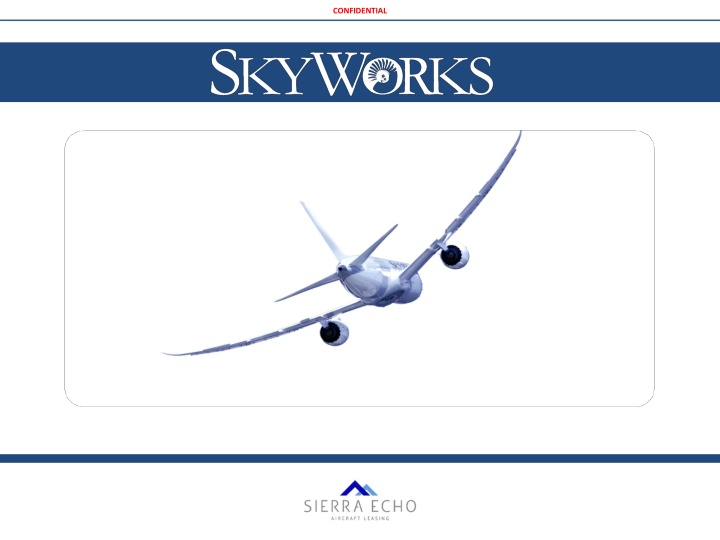

![Town of [Town Name] Real Estate Tax Rates and FY 2024 Budget Summary](/thumb/62211/town-of-town-name-real-estate-tax-rates-and-fy-2024-budget-summary.jpg)





